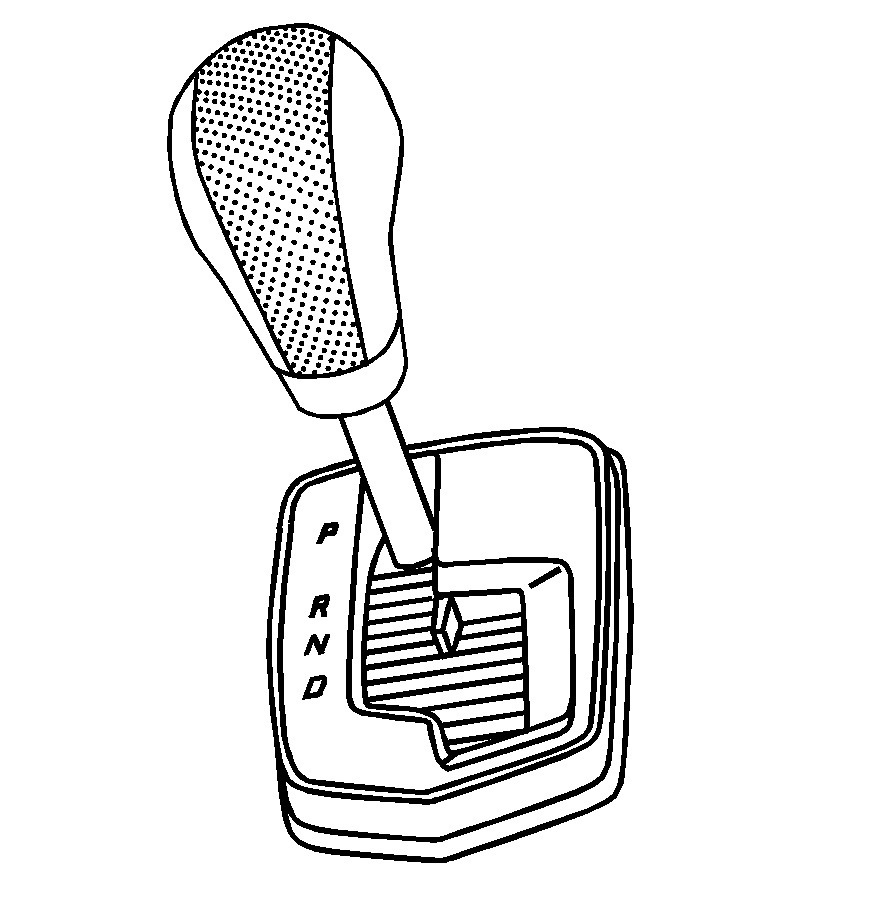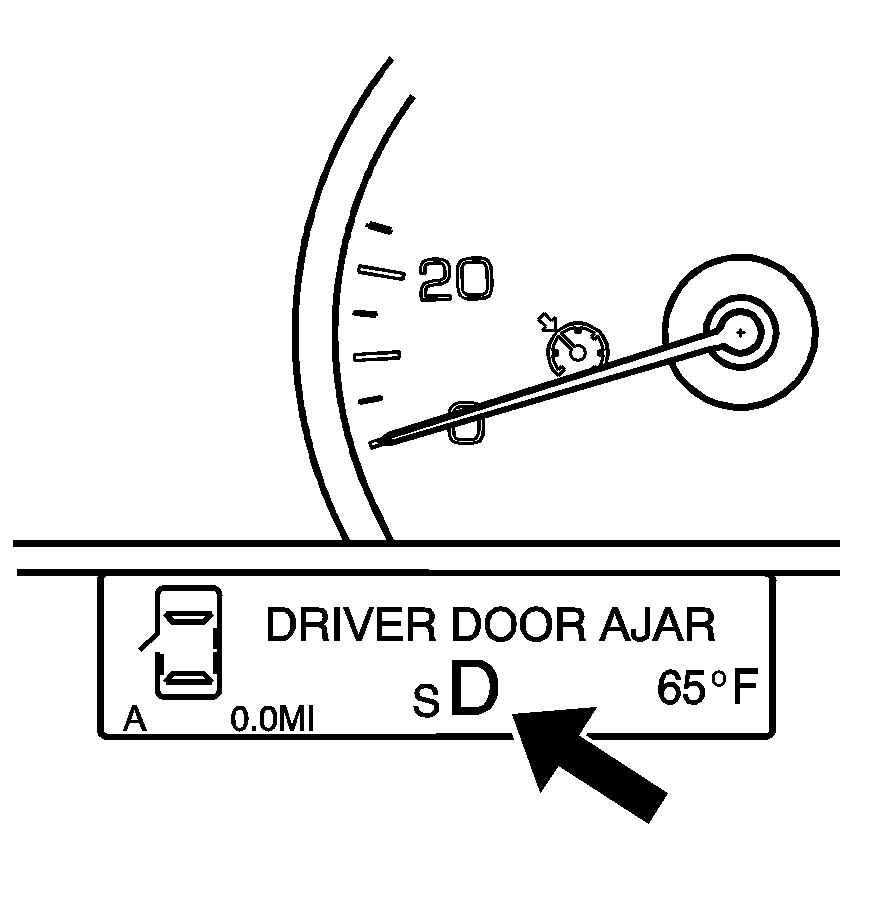
There are several different positions for the shift lever.
P (Park): This position locks the rear wheels. It is the best position to use when you start the engine because the vehicle cannot move easily.Caution: It is dangerous to get out of the vehicle if the shift lever is not fully in P (Park) with the parking brake firmly set. The vehicle can roll.
Do not leave the vehicle when the engine is running unless you have to. If you have left the engine running, the vehicle can move suddenly. You or others could be injured. To be sure the vehicle will not move, even when you are on fairly level ground, always set the parking brake and move the shift lever to P (Park). See Shifting Into Park . If you are pulling a trailer, see Towing a Trailer .Make sure the shift lever is fully in P (Park) before starting the engine. The vehicle has an automatic transmission shift lock control system. You must fully apply your regular brakes first and then press the shift lever button before you can shift from P (Park) when the vehicle is running. If you cannot shift out of P (Park), ease pressure on the shift lever and push the shift lever all the way into P (Park) as you maintain brake application. Then press the shift lever button and move the shift lever into another gear. See Shifting Out of Park .
Notice: Shifting to R (Reverse) while the vehicle is moving forward could damage the transmission. The repairs would not be covered by the vehicle warranty. Shift to R (Reverse) only after the vehicle is stopped.
R (Reverse): Use this gear to back up. At low vehicle speeds, you can also use R (Reverse) to rock your vehicle back and forth to get out of snow, ice, or sand without damaging the transmission. See If Your Vehicle is Stuck in Sand, Mud, Ice, or Snow for additional information.N (Neutral): In this position, the engine does not connect with the wheels. To restart the engine when the vehicle is already moving, use N (Neutral) only. You can also use N (Neutral) when the vehicle is being towed.
Caution: Shifting into a drive gear while the engine is running at high speed is dangerous. Unless your foot is firmly on the brake pedal, the vehicle could move very rapidly. You could lose control and hit people or objects. Do not shift into a drive gear while the engine is running at high speed.
Notice: Shifting out of P (Park) or N (Neutral) with the engine running at high speed may damage the transmission. The repairs would not be covered by the vehicle warranty. Be sure the engine is not running at high speed when shifting the vehicle.
D (Drive): This position is for normal driving. It provides the best fuel economy. If you need more power for passing, and you are:| • | Going less than 35 mph (55 km/h), push the accelerator pedal about halfway down. |
| • | Going about 35 mph (55 km/h) or more, push the accelerator all the way down. |
| The transmission will shift down to a lower gear and have more power. |
Downshifting the transmission in slippery road conditions could result in skidding, see "Skidding" under Loss of Control .
Driver Shift Control (DSC)
Notice: If you drive the vehicle at high RPMs without upshifting while using Driver Shift Control (DSC), you could damage the vehicle. Always upshift when necessary while using DSC.
Driver Shift Control (DSC) allows you shift an automatic transmission similar to a manual transmission. To use the DSC feature:
- Move the shift lever to the right from D (Drive) into the DSC area.
- The vehicle will remain in sport mode if the shift lever is not moved. Sport mode will shift automatically but remain in a gear longer then it would in normal driving mode based on braking and acceleration.
- Press the shift lever forward to upshift or rearward to downshift.

When in DSC mode, the sport symbol will appear in the Driver Information Center (DIC).

When using the DSC mode, the number displayed on the Driver Information Center (DIC) indicates the gear that the transmission is in. See Driver Information Center (DIC) for more information on the DIC.
When starting the vehicle from a stopped condition, only 1 (First) and 2 (Second) gear may be used.
While using the DSC feature the vehicle will have firmer shifting and increased performance. You can use this for sport driving or when climbing/descending hills to stay in gear longer or to down shift for more power or engine braking.
The transmission will only allow you to shift into gears appropriate for the vehicle speed and engine Revolutions Per Minute (RPM). The transmission will not automatically shift to the next higher gear if the engine RPM is too high.
If shifting is prevented for any reason, the selected gear will flash multiple times, indicating that the transmission has not shifted gears.
The transmission will allow you to shift to the gear selected and will automatically downshift when the vehicle comes to a stop. This will allow for more power during take-off and passing.
